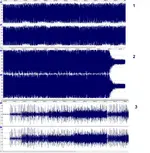V
viktor80
New member
hi
I am not a sound engineer, I m just trying to process my own records. so in this aspect, I m a beginner and do all the processing by ear, so maybe I could be wrong in the approach to achieve the desired result and must use some other method... so question is how to make a final amplification to make music maximally loud, when the high peaks of the wave amplitude beyond -2.5 but there is no overload? which VST tool is better to use to not disrupt the overall sound of the final master EQ settings, pan etc that I've already made? because VST enhancer tool after amplification makes the sound very different or goes to either the bass or to middle and then I have to do the processing is based on the resulting sound and finally lose the power of this volume again
I am not a sound engineer, I m just trying to process my own records. so in this aspect, I m a beginner and do all the processing by ear, so maybe I could be wrong in the approach to achieve the desired result and must use some other method... so question is how to make a final amplification to make music maximally loud, when the high peaks of the wave amplitude beyond -2.5 but there is no overload? which VST tool is better to use to not disrupt the overall sound of the final master EQ settings, pan etc that I've already made? because VST enhancer tool after amplification makes the sound very different or goes to either the bass or to middle and then I have to do the processing is based on the resulting sound and finally lose the power of this volume again


